#aureola’s art
Photo

Soror Aureola - Maxence Burgel
517 notes
·
View notes
Photo

i’ve been rewatching supernatural
#castiel#castiel fanart#spn#supernatural#spn fanart#tfw#digital art#my art i guess#sketch#this is super not-original but honestly i do not care#everyone and their mother has drawn this screencap of cas and/or with a broken aureola#because what can i say - it's a great cliché#and misha is HOT in that scene#it was super fun to draw this#crypt scene dean is coming soon
357 notes
·
View notes
Photo
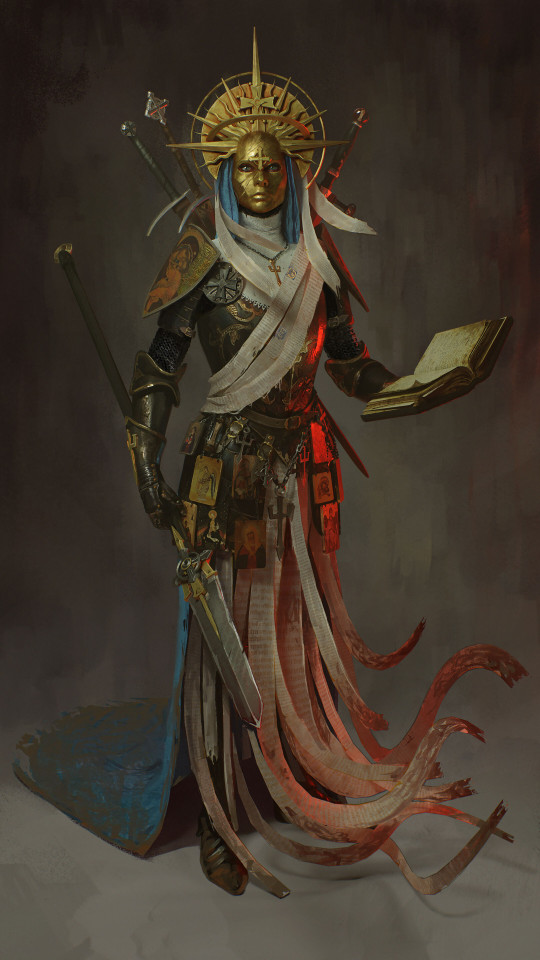
Suror Aureola (Sisters of the Golden Mask) by Maxence Burgel
132 notes
·
View notes
Text

Día 26: Statue
Ciertamente quería meter mi toque personal con el diseño de la estatua. Al principio pensaba que era demasiado pero al ver referencias medí cuenta que se pueden hacer muchas cosas que se ven imposibles. Mucho respeto a los escultores.
#My art#dibujo tradicional#dibujo en blanco y negro#ultrangeltober#ultrangeltober2023#angeltober#angeltober2023#angel#Día 26#Statue#estatua#lanza#aureola#antiguo#resquebrajado#Caelesti Ratione
13 notes
·
View notes
Photo


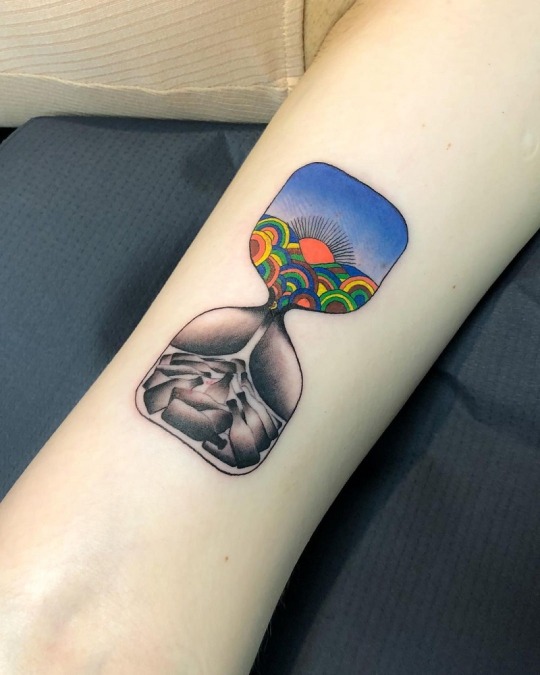

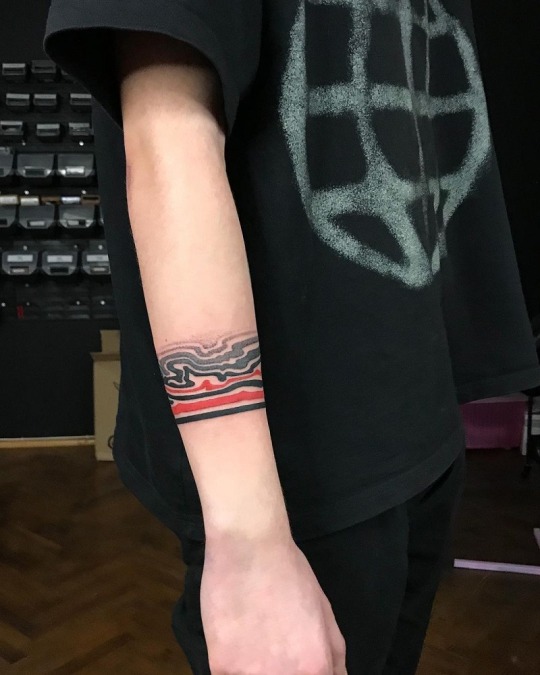
Marcin Aleksander Surowiec
#marcin surowiec#tattoos#tats#inked#colorworks#surrealist art#pointilism#polish artist#aureola tattoo collective#marcin aleksander surowiec
7 notes
·
View notes
Text
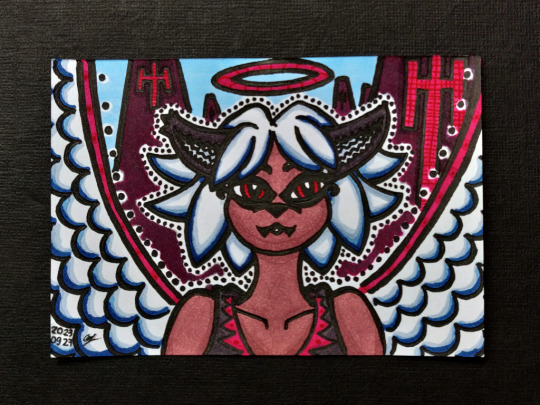
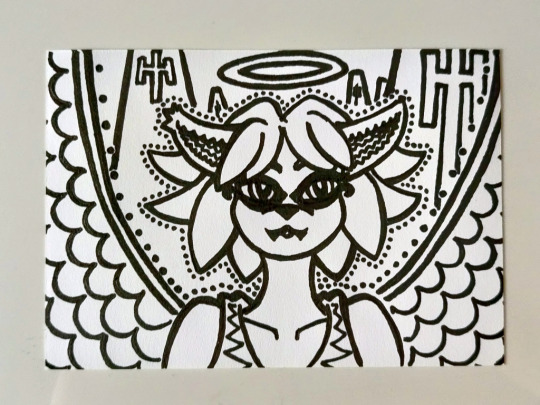
2023-09-27 - Illustration - Chat-ange
C'était pas comme ça que j'imaginais le paradis
~2h45, Marqueurs Alcool, A7
#traditional art#alcohol markers#illustration#angel#cat#lilaverse#paradise#holy#aureola#anthro#furry#non-binary
0 notes
Text
Kobiety są Świetne holy Women's

#polish artist#girlspower#modern art#digital painting#holy mother of god#grafika#polska#matka boska#motki#boskie#strajk kobiet#kobiety#womens#holy#święte#aureola#biblia#siła kobiet#lesbian#lgbtq#graphic art
0 notes
Note
LWA: Regarding the halo: we see a variant in the Job minisode. When Aziraphale does his "avaunt" speech, he has a full-body aureole, which unlike the halo around the head is /not/ an angelic attribute in religious painting and sculpture. The design of Aziraphale's aureole, with golden rays emanating from his body, looks like it was modeled on Marian iconography, as in the case of the Virgin of Guadalupe (https://www.metmuseum.org/art/collection/search/635401). There are a bunch of other examples, like the Madonna of Humility at the Getty Museum, where both the Virgin and God have ray aureoles. I am not sure where the design team thought they were going with this, although it fits with the Madonna pose they used for that promotional photo of Aziraphale in his Job robes.
ahhhhh this is so interesting!!!✨ i had no idea before this that there was such a nuance between aureole and halo, and their individual meanings in iconography (and thats not even taking into account different individual depictions like mandorla etc!). given the - as ive now learnt - very subtle but definite distinction between the two, and their individual meanings in religious contexts, it seems reasonable that the design team might have gone to some lengths to research it similarly!!!
(and now i shall spam you all with research because i am excited and Must Share)
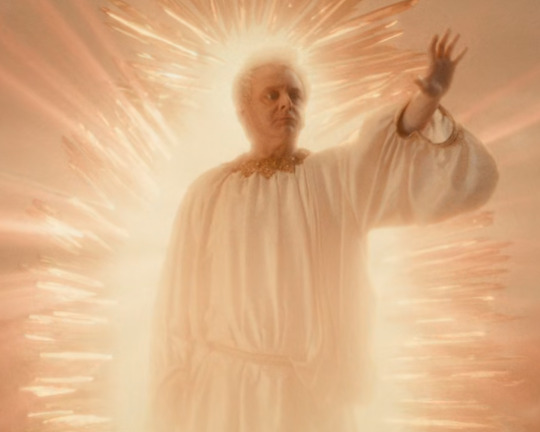

so as LWA, the oracle of all truth, has said - ep2 where aziraphale appears to crawley shows him with an aureole surrounding him, much like the multiple depictions of Our Lady of Guadalupe (above is the Virgin of Guadalupe, by Salcedo, 1779). other depictions/notable copies of the original however include:

(L-R: de Arellano, 1691, Gonzalez, c. 1698, and the original from cy/16th, upon which they're based which, as far as i can find, has no confirmed artist?).
and coming back to italian renaissance (which im slightly more familiar with), the following works show the same:

(L-R: Madonna and Child with Two Saints, Pisanello, c. 1445, The Last Judgement, Michelangelo, f. 1541, and Baptism of Christ, Verrocchio and da Vinci, c. 1475)
it is especially prevalent in christian religious art, but as LWA said it does appear to be mostly used for religious figures, and not necessarily angels or saints (most of those are depicted with halos instead). most examples, like the ones above, that ive found seem to be used exclusively for jesus and mary. in other religions such as buddhism, aureola appear to be shown in the form of a mandorla (an almond-shaped field) that surround enlightened beings, such as Buddha.
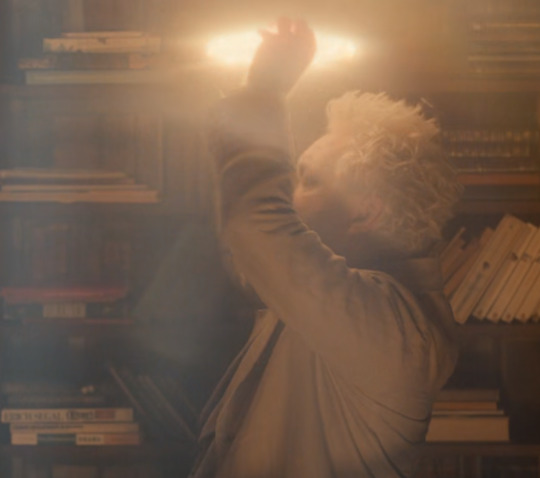

let's move onto halos; ep6 shows our funky angel removing his, and is shown in the form of a ring, emitting the same kind of light as the aureole. disks have been depicted in art from well before the time of christ, including in ancient egypt (ra) and in iran (mithra).
funnily enough, finding depictions of ring halos rather than disk/plate ones was actually quite difficult? either way - above shows Virgin of the Rocks by da Vinci, f. 1486, shows a subtle but clear ring halo over Mary's head. keeping with the cy/15-16th onwards for fair comparison, showing a combination of disk and ring halos:

(L-R: Branchini Madonna, di Paolo, 1427, Madonna of the Book, Botticelli, c. 1481, and Deposition of Christ, Raphael, 1507)
these all again are examples depicting christ and mary, so what about angels? i found the best example to look at is the annunciation to mary, as this was the subject of a number of notable pieces in the same time period:

(L-R: da Vinci, f. 1476, Fra Angelico, 1450, and Botticelli c. 1490)
all show gabriel with a halo around their head, as opposed to an aureole. the one that fascinated me though is botticelli; there is relatively little known about his depictions of the annunciation, but there are multiple - the above is in glasgow, there is another in new york, and the last is the Cestello Annunciation). however, in the first two, glasgow and new york, there is a clear feature of an aureole-type shaft of light coming from behind gabriel, and shining upon mary.
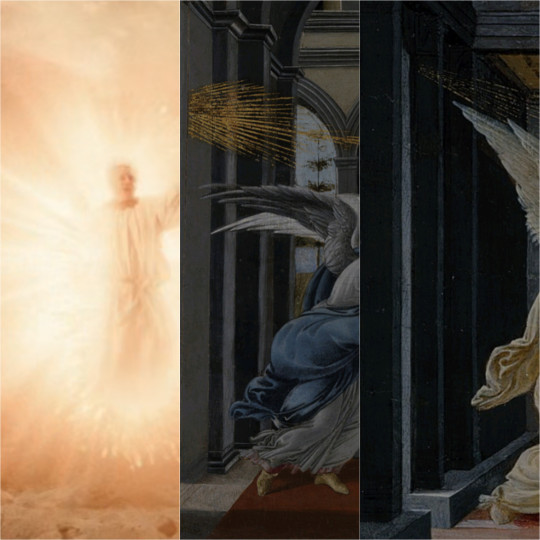
i certainly think that it's mostly representative of god's gift being bestowed on her, ("The Holy Ghost shall come upon thee, and the power of the Highest shall overshadow thee.", Luke 1:35) but the perspective of the glasgow painting almost shows like the light comes from a crack in the wall, and would suggest that aziraphale stepping out from the aureole as some sort of glorified portal is a mirror of this.
anyway, because ive rambled on long enough about nothing truly insightful; what is the point in these two different displays? well, from my research, it seems to be that aureola are used to surround the head or the body, and iconographically represent divinity, glory and, depending on the subject/context, enlightenment.
but given that it has largely been reserved in art for the depictions of the holy trinity as well as mary, to outright use it in connection with aziraphale seems... strange. in this particular scene, or part of his story, why has he been purposefully elevated to the same level of importance and power? we have no reason to suspect from the ensuing dialogue that god sent aziraphale deliberately in her name to thwart crowley, carrying her power... or did she?
the halo however appears to be specifically used for instances of depicting angels or saints (in the case of gabriel and various apostles in multiple artworks), as well as jesus and mary. so that to me would suggest that halos are somewhat specifically meant to represent innate saintliness and holiness, inherent divine nature. were specifically touched by god's grace and love, and were embodiments of god's will.
what this necessarily means in relation to aziraphale though, beyond him obviously being an angel, a representative of the heavenly host, and a messenger of god's will etc... im not entirely sure.
there is presumably no reason for him to be depicted with an aureole unless, as LWA suggests, it's to draw parallels to artwork where mary is especially shown as having one. but in the context of s2 (and the job minisode), isn't this a little out of field?
another thing - aziraphale does seem to be able to turn it on and off like a tap, suggesting that it's there in the narrative for sheer Impressiveness, to Look The Part, in front of a demon... so, is it only for design purposes, because cinematically it's bloody cool to look at? or is it meant to give insight into aziraphale's thoughts and beliefs?
with it, would he (in aziraphale's mind, bless) look intimating enough to thwart crawley's 'nefarious plan' with minimal effort? possibly, but i doubt it; im a pretty firm believer in Reasons for certain design choices, especially ones that would take a lot of post-production work to animate. so, could aziraphale have chosen to appear with the aureole, to be suitably intimidating, but after having his faith in god's will shaken after the events of job, chose not to manifest it again, because its symbolism no longer rings true for him?
#this response was an insane amount of effort#especially whilst melting in 28c heat#good omens#ask#everyone say thank you to LWA for another stellar observation and insight#fun fact: i read 'job robes' as jobes and now they will only ever be jobes to me#jobes (job robes)#halo theory#mary/pieta spec#s2 meta#costume meta
50 notes
·
View notes
Text
[UPG] Epithets of Abundantia
i haven’t been able to find any historical epithets of the goddess Abundantia in my research, so here are a few i’ve created to further worship every aspect of Her! these are heavily based in my personal views (UPG) of Her, so please keep that in mind as you read.
Abundantia Terrae
“of the Earth” ; based on the print of the same name by Kenyon Cox. this epithet has to do with land and natural resources being abundant and prosperous. it also refers to Her association with both grain and the cornucopia.
Abundantia Maris
“of the Sea” ; this epithet is also based on a print of the same name by Kenyon Cox. it encapsulates Her historical associations with ships, water, and trade, as well as flourishing sea life and treasures.
Abundantia Patrona
“protectress” ; this epithet displays Her as a guardian of the wealth and storage of a household/area/country/etc., as well as being a guardian of mutual aid, community, and working-class people.
Abundantia Mater Carissima
“beloved mother” ; based on depictions of Her in Western art (ex. Ruben’s Abundance) with bare breasts and/or with little cupid-like children. this epithet also refers to Her motherly kindness and care, and if you’re partial to metaphors, how She figuratively mothered the Golden Age of the Roman empire and was depicted in their propaganda.
Abundantia Aureola
“golden” or “splendid” ; this epithet describes Her appearance on and patronage over coins and money, as well as Her overall splendor and decadence.
Abundantia Pacis
“of Peace” or “of Pax (the goddess)” ; again, based on later Western art showing Her and the goddess Pax together, as an allegory for peace bringing abundance to a place. this epithet represents Her connection with Pax that is, in my opinion, deep, intrinsic, and somewhat sapphic in nature.
#mine#info#roman pagan#roman polytheist#roman polytheism#roman paganism#pagan#paganblr#abundantia#upg
13 notes
·
View notes
Text
“La indignación moral no es mas que envidia con aureola”
George Herbert

Fue un poeta, orador y sacerdote anglicano de origen inglés nacido en Montgomery Castle, Gales en 1593, reconocido con el paso de los siglos por su obra literaria como uno de los principales letristas devocionales británicos.
Fue el hermano menor de Edward Herbert, quien fuera el primer barón de Herbert en Cherbury.
Fue educado en su casa, en la Westminster School y en el Trinity College de Cambridge, fue elegido en 1620 orador de la universidad, lo cual lo describe como el mejor lugar de la universidad.
Durante la carrera académica de Herbert, su único verso publicado fue para ocasiones especiales en griego y en latín.
Herbert luchó durante gran parte de su vida con deseos contradictorios. Por un lado era una académico talentoso y al que parecía prometer una gran carrera política, y por otra parte, guiado por su madre, se inclinaba fuertemente hacia la vocación religiosa, y aunque estaba muy involucrado con la corte, a la edad de 36 años decidió recurrir a la iglesia en donde fue ordenado diácono
Por lo anterior, Herbert renuncia como orador en 1627 y se ordena sacerdote y rector de Fuggleston-cum-Bemerton, una parroquia sencilla dentro de un suburbio de una ciudad antigua llamada Wilton, sede de los parientes de Herbert, los condes de Pembroke. En donde pudo aflorar su talento poético.
George Herbert se hizo amigo del clérigo anglicano Nicholas Ferrar, creador de un conjunto de reglas para la disciplina religiosa de la comunidad.
Herbert se dedicó a lo largo de su vida a escribir poemas, y desde su lecho de muerte envió un volumen manuscrito a Ferrar, pidiéndole su decisión para ser publicados o destruidos. Ferrar los publica con el título “El Templo: poemas sagrados y jaculatorias privadas” en el año de 1633.
Herbert fue un maestro versátil de la forma métrica y de todos los aspectos del arte del verso. Comparte sus conflictos con el poeta metafísico arquetípico y amigo de la familia John Donne, con quien había un gran parecido en el uso del lenguaje común en los ritmos del habla.
Algunos de sus poemas como “El Altar” y “Easter Wings” se consideran poemas patrones, siendo consciente de la peculiaridad de su camino creativo hace mas difícil su verso precisamente para exponer polémicamente su arte poético con insólitas vetas de sátira y con un rigor intelectual de conceptos que supera en modernidad y vanguardismo a mucha de la poesía actual.
Herbert muere de tuberculosis en marzo de 1633 a la edad de 39 años en Bemerton.
Fuentes: Wikipedia, georgeherbert.org.uk, Britannica.com
#george herbert#citas de reflexion#citas de la vida#poetas#citas de poetas#inglaterra#frases de reflexion
11 notes
·
View notes
Text
random thing that I always do for my dumb personal projects is I go through art and I am like "hmmm in what situation for which book/characters can I apply this? Hmm Joan of arc by Albert Lynch mixed with that woman disguised as Joan of arc from that one French post card I got a while ago, but holding an axe instead of that flag, standing on the shell from Botticelli's the brith of Venus with a kraken illustration from that one Marine biology book I have on my shelf as an aureola behind her and some impressionism seascape yet to be decided could be Asha" but then on other occasions I just see a picture and go [insert character/dynamic]-coded. Consolation by Munch is Theyne-coded. Leighton's The Hostage but with another background is Arya I, AGOT-coded, that one illustration about Tristan and Isolde by whose name I forgot is Briennsa coded.
Anyway, Egon Schiele inspired Stavos.

12 notes
·
View notes
Photo

AYO GUYS
I should’ve posted this a few days ago BUT
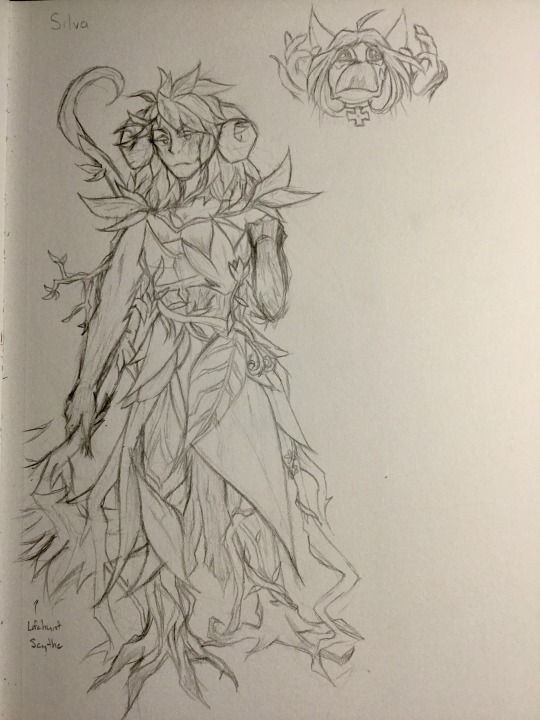
She (and Flora after reviewing her ecoterrorism history)
I’m giving Silva the coolest impression in Calamity Mod Squad. (Poses are hard) Kinda antagonistic ancient dryad happening to become semi-friends with Permafrost and Aureola, until she killed a Dragon for the Auric Soul.
I think I’ll give her a scythe as a weapon preference.
This is worth a digital rendition like a splash art. It’s just gonna take me a while since I’m working on something else.
If there’s sometime I want to say, it’s that I don’t mind certain depictions of Silva. I’m just taking inspiration from Keio (stained-brutal-crackpot), because their version of her is kinda like the direction I want for the tree lady in my story, with my own liberties, too. Can’t wait to draw her being absolutely terrifying in her God form.
Also uhm have some Bird Squad propaganda
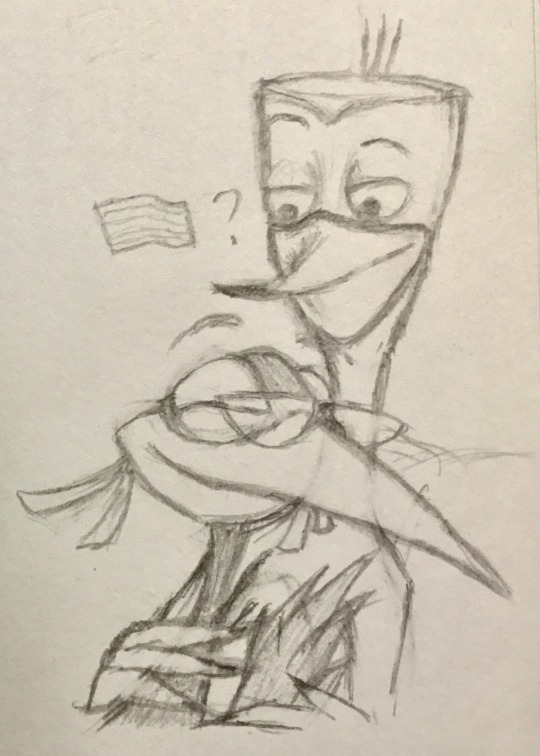
12 notes
·
View notes
Text

Entrada de Cristo en Jerusalén, ca. 1125, del Maestro de San Baudelio de Berlanga. Fresco montado sobre lienzo, 70-3/4 x 121 pulgadas.
Este fresco de la entrada de Cristo en Jerusalén es una pintura mural separada de la ermita mozárabe de San Baudelio, cerca de Casillas de Berlanga, en el centro norte de España. La iglesia en sí fue construida a principios del siglo 11, en lo que entonces era una frontera inestable y fuertemente fortificada entre los territorios controlados por cristianos y musulmanes. El interior fue pintado unos cien años más tarde con dos ciclos de decoraciones al fresco. Las paredes superiores fueron ilustradas con una serie de narraciones radiantes de la vida de Cristo, dos de las cuales están ahora en el IMA: esta y Las bodas de Caná. Las paredes inferiores estaban cubiertas con escenas de caza y animales exóticos, motivos que demuestran la receptividad de los cristianos españoles a la riqueza y el refinamiento del arte de la corte islámica.
Cristo hace su entrada en Jerusalén a lomos de un y su potro, seguido de una procesión de siete discípulos con aureolas. La multitud bíblica que lo recibió a las puertas de la ciudad está representada por dos pequeñas figuras que ponen ramas a sus pies. Otros miran desde detrás de la mampostería estilizada de los muros y torres de Jerusalén mientras Cristo levanta su mano para bendecirlos.
Los mozárabes eran cristianos españoles que vivían bajo el dominio musulmán que adoptaron ciertos aspectos de la cultura árabe.
Información e imagen de la web del Museo de Arte de Indianápolis.
7 notes
·
View notes
Note
didn't know there diffrent halos have other names, in my language we call all halos aureola
thats so cool!! I dont know the real reason for the seperation between the terms in english- an aureole is more specifically divine and theres specific colours that can be used to indicate levels of importance too. these trends im talking are basically all from spanish and italian biblical art...both latin root languages i think? so maybe if ur language is also latin root you also share the term.
#i dont know where the term halo on its own originated tbh#i know english is also latin root but its a fucked up language so#ram asks#anon#i found out a lot from studying sandro botticelli u_u ! if that means anything here
38 notes
·
View notes
Text
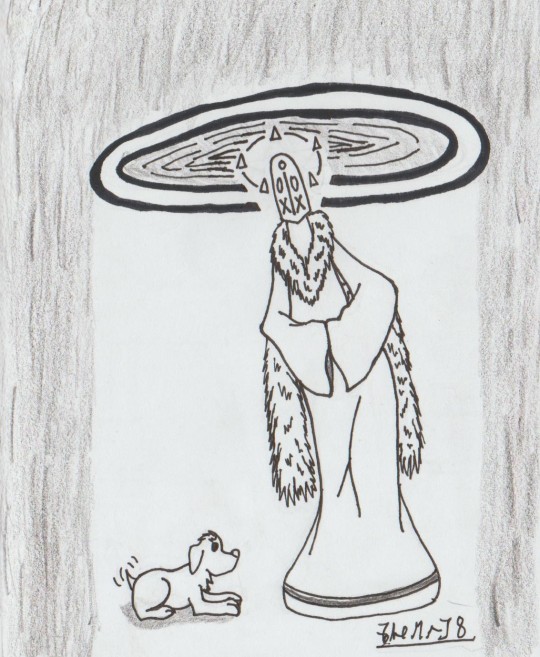
Día 17: Rain
Es uno de los diseños más experimentales que hice, pero no quería desperdiciar la oportunidad de hacer algo lindo. Por cierto, me gusta como me salió la lluvia.
#My art#dibujo tradicional#dibujo en blanco y negro#ultrangeltober#ultrangeltober2023#angeltober#angeltober2023#angel#Día 15#Rain#lluvia#cachorro#perro#aureola
15 notes
·
View notes
Text
art collection // three
poem: te quiero por mario benedetti
Tus manos son mi caricia
mis acordes cotidianos
te quiero porque tus manos
trabajan por la justicia.
Si te quiero es porque sos
mi amor, mi cómplice y todo
y en la calle codo a codo
somos mucho más que dos.
Tus ojos son mi conjuro
contra la mala jornada
te quiero por tu mirada
que mira y siembra futuro.
Tu boca que es tuya y mía
tu boca no se equivoca
te quiero porque tu boca
sabe gritar rebeldía.
Si te quiero es porque sos
mi amor mi cómplice y todo
y en la calle codo a codo
somos mucho más que dos.
Y por tu rostro sincero
y tu paso vagabundo
y tu llanto por el mundo
porque sos pueblo te quiero.
Y porque amor no es aureola
ni cándida moraleja
y porque somos pareja
que sabe que no está sola.
Te quiero en mi paraíso
es decir que en mi país
la gente viva feliz
aunque no tenga permiso.
Si te quiero es porque sos
mi amor mi cómplice y todo
y en la calle codo a codo
somos mucho más que dos.
painting and painter: the lovers II by rené magritte [1928]

why it is relevant to the eye of the beholder:
The Lovers II by René Magritte depict the notion of failed intimacy in a relationship. Be it romantic or a simple friendship or acquaintanceship. The painting shows two individuals in a relationship where the ultimate form of connection between the two is frustrated by the cloths wrapped around their faces. This plays on the notion that no matter the proximity or how close one thinks they are to their significant other, one can never truly get to know a person for who they are. There will always be secrets left untold, memories left unsaid, songs left unsung, paintings left unfinished, nights left to become day, scars left unseen, pain left unshared. No matter how hard we try, intricacies are called intricacies for a reason. We are made up of them for a reason. The painting leaves room for other factors to fill in the blank spaces. The colors could be more vibrant, representing the passion of the couple but instead they are worn out and opaque which, once again, further represents the two dimensional capabilities of human beings understanding one another. A race that is never ending, I suppose.
scripture: psalm 139:13-14 TPT
“You formed my innermost being, shaping my delicate inside and my intricate outside, and wove them all together in my mother’s womb.
I thank you, God, for making me so mysteriously complex! Everything you do is marvelously breathtaking. It simply amazes me to think about it! How thoroughly you know me, Lord!”
a song that serves as a beautiful companionship to the feeling of the painting:
—movement by hozier.
#art#rene magritte#lovers#painting#biblevisuals#faith#scripture#concept art#hozier#poetry#spanish poetry#mario benedetti
2 notes
·
View notes